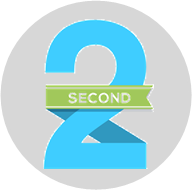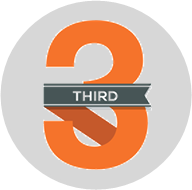P H A S E I


Embracing Your Painful Past to Unleash Pleasure and Joy in the Present
Today's Big Ideas & Your Daily Checklist
Day 3 Theme

In The Pendulum Solution we introduced you to the law of duality and how this single law can pave the way to making sobriety second nature in your life. You learned Sigmund Freud’s Pleasure Principle and how every action you take is to gain pleasure or avoid pain, and why this duality is so critical to your sobriety. You also discovered why problem drinking is actually the greatest gift in your life.
All or Nothing
As you finish Day 3 we want to acknowledge that we know this can be tough. We know that believing you can successfully cut back or quit drinking AND be happy at the same time can seem unimaginable. But if you don’t give up, we promise you that the vision you wrote yesterday will become a reality in your life. Now, if by chance you didn’t write that 30-Day vision or do the action steps from Day 2, please go back and do them now.
Also as we mentioned in Day 2, the significance of repetition in your life is enormous. Just as repetition created your drinking problem, it will create your solution. With that in mind, take a few minutes and review the main points from Day 2.
Last, in Day 3 you learned the importance of how an all-or-nothing attitude can lead to the desire to accomplish a bunch of other goals alongside changing your drinking. Remember it is critical that you focus solely on cutting back or quitting drinking because setting additional goals can result in failing all of them. Don’t worry, your other goals will come easily once you have successfully changed your drinking.

The Law of Duality
The Pendulum Solution is based on the law of duality, which states that two different feelings, characteristics, or features cannot exist without one another.
To fully understand thriving in sobriety, you must fully understand its opposite, which will be unique for each of you.
Another way to think about this is it is all about opposites.
- The opposite of being a problem drinker is being sober.
- The opposite of a lack-based mindset is an abundance mindset.
- The opposite of being a smoker is being a non-smoker.
So in many ways the solution to quitting or cutting back drinking is simply doing the opposite of what you have done in the past.
Your Greatest Gift
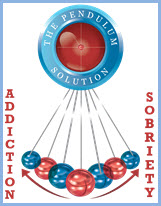
Your excessive drinking caused you and your loved ones pain and hurt, but these awful feelings also enabled you to swing your "pendulum" towards happiness and pleasure. When you accept your past as "perfect," you will transform your shame and embarrassment into confidence and pride, enabling you to help others.
The Pleasure Principle
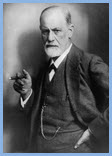
The Pleasure Principle (Sigmund Freud – see photo) simply states that everything you do in life is either to avoid pain or to gain pleasure. In some ways, to get and stay sober is as simple as associating enough pain with drinking and enough pleasure with staying sober.
Studies have also shown that you will do almost twice as much to avoid pain than to gain pleasure, which is why it’s so important to associate pain to your drinking (like you did on Day 1 in the Time Travel Technique).
So why does drinking still seem compelling, even when you have associated pain to it? It’s because drinking appears to eliminate pain and provide pleasure in the short term, almost instantly.
That’s why it’s essential to understand the pleasure principle — so you can proactively leverage it to work for you instead of against you.
Day 3 Checklist
Day 3 Action Steps

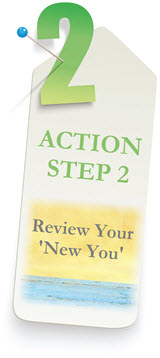
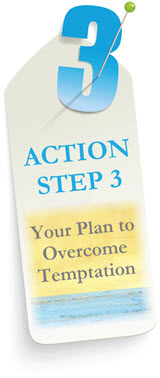
30-Day Search Engine



Daily Bonus Content
Craig Ferguson, a former late-night host, shares an extremely funny and enlightening personal story about how absurd his drinking was before he got sober.

Andre Agassi has a different story of addiction and recovery than many others that we cover in this book. He is not the typical athlete or celebrity who struggled for many years with abuse. Nor did he create incredible havoc in his life or even need to attend rehab to get sober. Rather, his story includes a relatively brief but powerful dive into the world of crystal methamphetamine addiction. In his book, Open, Agassi talks about how he suffered from depression in 1997 and 1998—in the midst of his incredibly successful tennis career and marriage to Brooke Shields—and how he became temporarily addicted to crystal meth.
In his book Agassi openly shares one of his experiences when strung out on crystal meth. “After a loss in D.C. in July, I decide to shut down for the summer. Though we were married in April, Brooke is in Los Angeles working and I spend much of the summer in Vegas. Slim is there, and we get high a lot. I like feeling inspired again, even if the inspiration is chemically induced. I stay awake all night, several nights in a row, relishing the silence. No one bothering me. Nothing to do but dance around the house and fold the laundry and think. Apart from the buzz of getting high, I get an undeniable satisfaction from harming myself and shortening my career. But the physical aftermath is hideous. After two days of being high, of not sleeping, I'm an alien. I have the audacity to wonder why I feel so rotten. I'm an athlete, my body should be able to handle this.”
Eventually Agassi does hit his “rock bottom” when the reality of the potential impact of his addiction came crashing down on him. “I'm walking through New York's LaGuardia Airport when I get a phone call. It's a doctor working with the Association of Tennis Professionals. There is doom in his voice, as if he's going to tell me I'm dying. It was his job to test my urine sample from a recent tournament. ‘It's my duty,’ he says, ‘to inform you that you've failed the standard ATP drug test. The urine sample you submitted has been found to contain trace amounts of crystal meth.’” Agassi writes, “My name, my career, everything is now on the line. Whatever I've achieved, whatever I've worked for, might soon mean nothing. Part of my discomfort with tennis has always been a nagging sense that it's meaningless. Now I'm about to learn the true meaning of meaninglessness.”
Agassi responded to the failed drug test by making up a story that he accidentally drank a spiked drink. The Association of Tennis Professionals accepted his response, and with that the failed drug test was thrown out. He was ashamed and vowed that this lie was the last of it. In 1998, Agassi began a rigorous conditioning program and worked his way back from addiction, and today he is still sober. Not only did he get sober, but he also went on to win five of his eight grand slams following his struggle with addiction, all of which occurred after the age of 29. In fact, by 1998 he had made the largest one-year jump into the top 10 in the history of the ATP rankings.
Agassi’s story is testament to the fact that we all struggle, and we can all be lured into the power of drugs and alcohol and their ability to instantly give us pleasure and remove pain in our lives, but we can overcome this addiction to find true happiness and abundance. As he states in his quote above, “Life is a tennis match between polar opposites.” Agassi has shared in interviews that he went from hating tennis to loving tennis. He went from the depths of crystal meth addiction and facing an embarrassing suspension to winning 5 grand slams.
Lao Tzu, Tao Te Ching, translated by Jonathan Star (New York: Penguin, 2001).
Andre Agassi, Open (New York: Random House, 2009).
Brené Brown, I Thought It Was Just Me (New York: Penguin Group, 2007).
Sigmund Freud, Beyond the Pleasure Principle translated by James Strachey (Seattle: Pacific Publishing Studio, 2010).
William Glasser, MD, Positive Addiction (New York: Harper & Row, 1976).
E. Tory Higgins, “Beyond Pleasure and Pain,” American Psychologist, December 2007.
Charles Duhigg, The Power of Habit: Why We Do What We Do in Life and Business (New York: Random House, 2012).
Eric Clapton, Clapton: The Autobiography (New York: Broadway Books, 2007).




